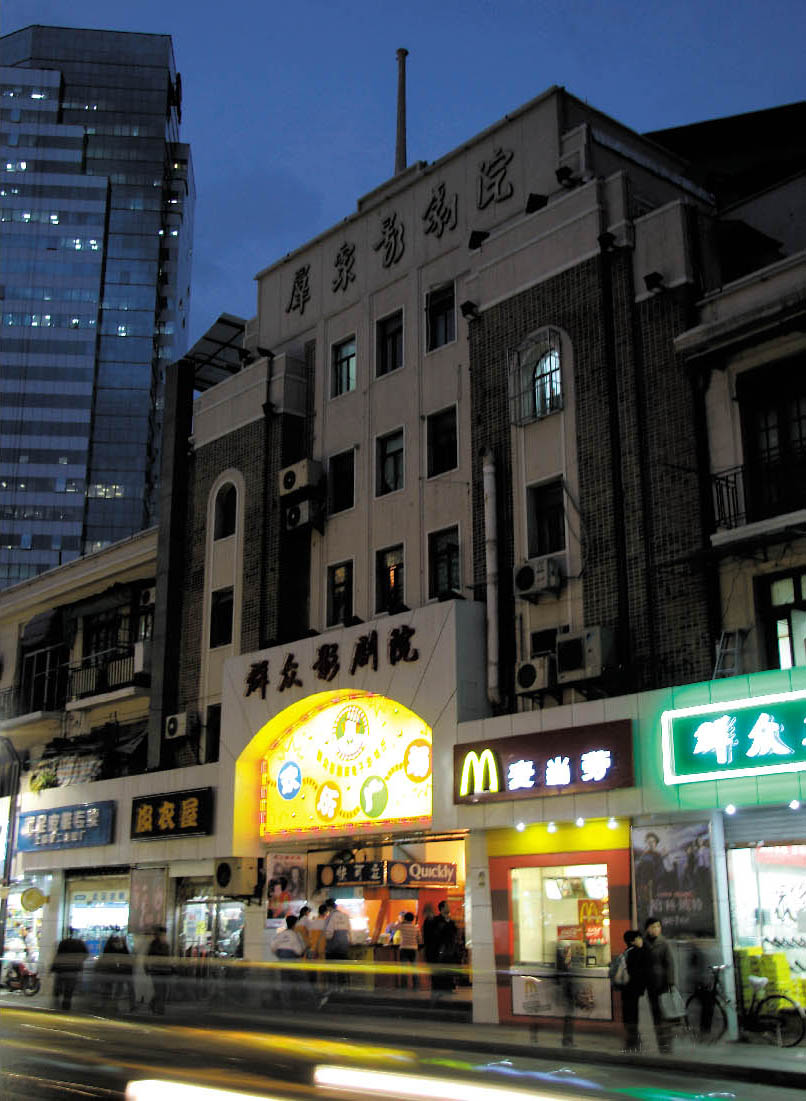North Sichuan Road on:
[Wikipedia]
[Google]
[Amazon]

 North Sichuan Road () is a shopping street in
North Sichuan Road () is a shopping street in

 North Sichuan Road () is a shopping street in
North Sichuan Road () is a shopping street in Hongkou District
, formerly spelled Hongkew, is a district of Shanghai, forming part of the northern urban core. It has a land area of and a population of 852,476 as of 2010.
It is the location of the Astor House Hotel, Broadway Mansions, Lu Xun Park, and H ...
, Shanghai
Shanghai (; , , Standard Mandarin pronunciation: ) is one of the four direct-administered municipalities of the People's Republic of China (PRC). The city is located on the southern estuary of the Yangtze River, with the Huangpu River flowin ...
, China. From the Suzhou Creek in the south, the road crosses North Suzhou Road, Haining Road, and Hengbang Road among others, and connects with Shanyin Road in the north, giving the road an "S" shape. It joins Duolun Road, and runs to East Jiangwan Road then turns to the west, ending at Lu Xun Park
Lu Xun Park, formerly Hongkou (Hongkew) Park, is a municipal park in Hongkou District of Shanghai, China. It is located on 146 East Jiangwan Road, right behind Hongkou Football Stadium. It is bounded by Guangzhong Road to the north, Ouyang Road ...
.
History
Before Shanghai was settled as a port city, North Sichuan Road was only a secondary street linking Suzhou Creek and Baoshan Town (now Baoshan District). During the 1860s, there were several stores and a natural ice stadium. After the completion of the construction of the bridge over Suzhou Creek and theWoosung Railway
The Woosung railway ( Chinese: s , t , p ''Wúsōng Tiělù'')Also Wusong Road or Woo Sung RailwayIt is sometimes also called the Songhu railway, although that name more properly refers to the 1890s railway which ran principally along the same ...
, more and more shops and inhabitants moved to this area. In 1877, the government started to pave the street, and in the same year, Gongji Hospital (now the First People's Hospital) moved from the French Concession
The Shanghai French Concession; ; Shanghainese pronunciation: ''Zånhae Fah Tsuka'', group=lower-alpha was a foreign concession in Shanghai, China from 1849 until 1943, which progressively expanded in the late 19th and early 20th centuries. ...
to this area. Later on, with the construction of the road system, it grew up gradually. Firstly, it was named as the North of the Ferry Bridge. Then because of its connection with the Sichuan Road, it was renamed as the North of the Sichuan Road.
During the 1920s, an increasing number of Japanese immigrated to this area. Many Japanese stores, restaurants, tea houses, hospitals, schools and public facilities appeared, including Goumaizuhe (now a Sichuan Chinese traditional medicine Store), Fumin Hospital (now the Fourth People's Hospital), North Japan Xunchang primary school (now a middle school attached to Education College), Neishan Hospital, and the Japan Printing store. There was also a special vegetable market for Japanese immigrants in the area. Thanks to the development of the public facilities around this area, from the 1920s, the North of the Sichuan Road became the third largest street of Shanghai after Nanjing Road
Nanjing Road (; Shanghainese: ''Noecin Lu'') is a road in Shanghai, the eastern part of which is the main shopping district of Shanghai. It is one of the world's busiest shopping streets, along with Fifth Avenue, Oxford Street, Orchard Road, T ...
and Huaihai Road
Huaihai Road or Huaihai Lu (; Shanghainese: ''Wahae Lu'') is a road in Shanghai, China. The central section of Huaihai Road is one of the two major shopping streets in central Shanghai; the other is Nanjing Road. Compared with the more touristy N ...
.
Events
When theBattle of Shanghai
The Battle of Shanghai () was the first of the twenty-two major engagements fought between the National Revolutionary Army (NRA) of the Republic of China (ROC) and the Imperial Japanese Army (IJA) of the Empire of Japan
The also ...
broke out on August13, 1937, the area was occupied by Japanese troops. Because of severe controls imposed by the Japanese, most of the local inhabitants moved out. The stores along the North of the Sichuan Road gradually closed with only a few Japanese stores remaining open. The road went into decline during this period.
In 1945, after the Second World War
World War II or the Second World War, often abbreviated as WWII or WW2, was a world war that lasted from 1939 to 1945. It involved the vast majority of the world's countries—including all of the great powers—forming two opposi ...
, Japanese troops and immigrants moved out. More and more shops came back to this area. Stores, Fuxing Middle School, a theater and book stores reopened. A new Public Museum (now at No. 1844 North Sichuan Road) was established. In the same year, trolley car and bus system were resumed. On 1January 1946, the North of Sichuan Road was formally named as North Sichuan Road.
{{coord, 31.2581, 121.4829, display=t
Streets in Shanghai
Shopping districts and streets in China
Landmarks in Shanghai
1877 establishments in China